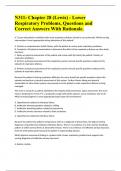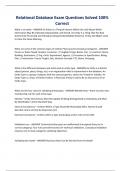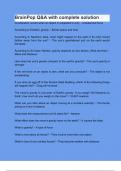Exam (elaborations)
N311: Chapter 28 (Lewis) - Lower Respiratory Problems, Questions and Correct Answers With Rationale. A 71-year-old patient is admitted with acute respiratory distress related to cor pulmonale. Which nursing intervention is most appropriate during admissi
- Course
- Institution
N311: Chapter 28 (Lewis) - Lower Respiratory Problems, Questions and Correct Answers With Rationale. A 71-year-old patient is admitted with acute respiratory distress related to cor pulmonale. Which nursing intervention is most appropriate during admission of this patient? A. Perform a compre...
[Show more]





